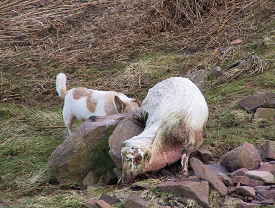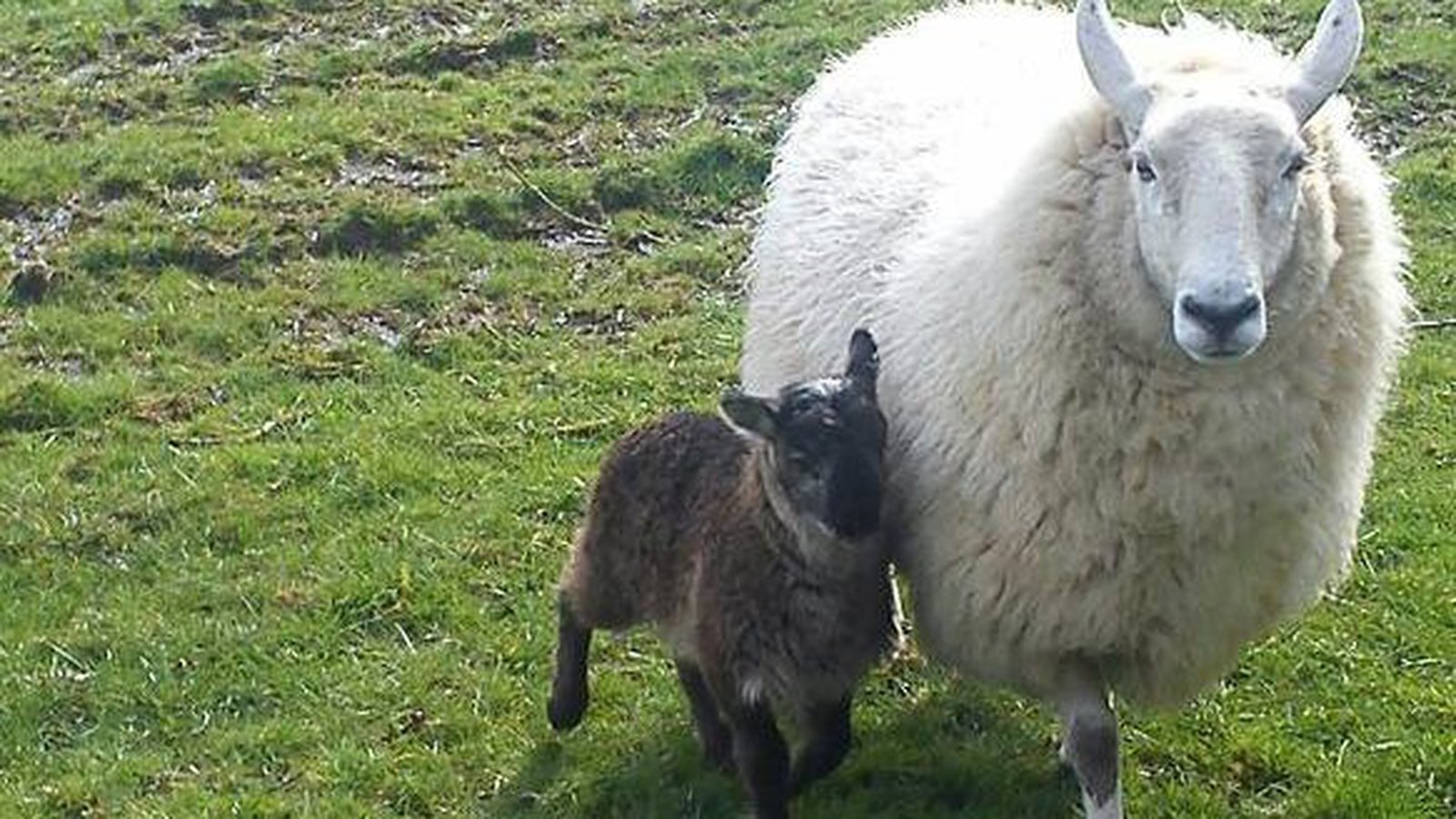

multiceps can affect any tissue, but it normally targets the brain in animal hosts. multiceps, sheep are the intermediate hosts, but goats, cattle, horses, and antelopes are also common hosts. The intermediate hosts for coenurosis can vary depending on the Taenia spp. The definitive hosts for coenurosis are dogs, foxes, and other canids. glomerata is found in Nigeria and the Republic of Congo

brauni is found in North America, Rwanda, and the Republic of Congo serialis is found in Canada and the United States multiceps is commonly found in France, England, Brazil, Africa, and the United States. Since the disease is so uncommon in humans, no vaccine has been developed for it. In the rare cases where a human is infected, both surgical and pharmaceutical treatments are available. Treated sheep typically regain sufficient function to rejoin the flock and necropsy indicates that the site of the cyst collapses and scars, relieving pressure on the brain. The site of the cyst can usually be estimated based on the neurological symptoms and skull thinning. In sheep, the usual treatment is surgical trepanation to remove the brain cyst, one of the few economically viable surgeries in farm animals. The symptoms for coenurosis vary depending on where the cyst is located. Next, eggs hatch in the intestine of the definitive host and circulate in the bloodstream until they reach suitable organs. The disease is transferred to the definitive host when the host digests the tissue of the intermediate host. The coenuri cysts found in the central nervous system have multiple cavities, and those that are not have only one cavity. Coenuri have a collapsed membrane and several protoscolices on the interior. Coenuri are white, fluid filled structures that are 3-10 centimeters in diameter. Once the oncospheres reach their destination, they take about three months to develop into coneuri. The oncospheres can bind to the eyes, the brain, skeletal muscle, and subcutaneous tissue. The oncospheres continue to move through the bloodstream of the intermediate host until they find suitable organs to inhabit. Oncospheres are the larval form of tapeworms that contain hooks for attaching to the host’s tissues.


The eggs are then ingested by an intermediate host, where the eggs hatch in intestines and release oncospheres. brauni are shed in the feces of infected hosts into the environment. Ĭoenurosis in humans is rare and was not diagnosed until the twentieth century, with the first recorded cases by each Taenia species being: T. It was shown that the parasite could be transferred across species to and from dogs by Karl Theodor Ernst von Siebold and Friedrich Küchenmeister in the 1850s and the species was identified as Taenia multiceps (then called Coenurus cerebralis) in 1890. The cause of these cysts was identified as an animal parasite in 1780 by Nathanael Gottfried Leske and Johann August Ephraim Goeze. However, it was only in the 1600s that clearer behavioural and necropsy descriptions were recorded, including the chacteristic brain cysts and early surgical methods of removal. The texts of Hippocrates describe a nervous disease of sheep consistent with the symptoms of gid, comparing its symptoms to epilepsy and describing the accumulation of bad-smelling fluid in the brain. Humans cannot be definitive hosts for these species of tapeworms. The disease occurs mainly in sheep and other ungulates, but it can also occur in humans by accidental ingestion of tapeworm eggs.Īdult worms of these species develop in the small intestine of the definitive hosts (dogs, foxes and other canids), causing a disease from the group of taeniasis. It is caused by the coenurus, the larval stage of these tapeworms. Different forms of coenurus in sheep and rabbits and an adult wormĬoenurosis, also known as caenurosis, coenuriasis, gid or sturdy, is a parasitic infection that develops in the intermediate hosts of some tapeworm species ( Taenia multiceps, T.


 0 kommentar(er)
0 kommentar(er)
